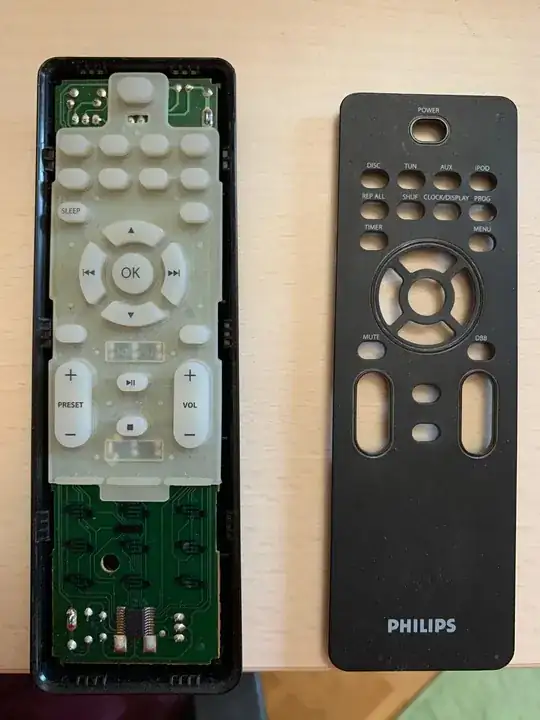I have this old Hi-Fi speaker system (Philips DC146) that I'm using with my RPi to stream my music with airplay from my phone and I've set up this motor to switch it on/off because it makes some noise when on without playback.
The motor has worked for a while but I do feel the torque getting weaker because of the tension it goes through everytime it acts on the button.
There is an IR remote that controls it but I would like to be able to send those commands from my pi because I've set up speech recognition in my room.
I've looked inside the remote and i wonder if it's possible to use the circuit to control the IR transmitter.
Otherwise, what parts would I need to buy to be able to, say, stick a transmitter to the reciever on the speaker and have it act as the remote??
(If possible, I'd like something simple to install like USB if that exists. Otherwise, a bit of challenge isn't too bad either.) I have found this but I'm not sure whether it's right and if it's possible to extend the distance between it and the pi.
I hope this is the right place to ask my question, there is a lot of information out there and I'm kind of overwhelmed.
Thanks!



